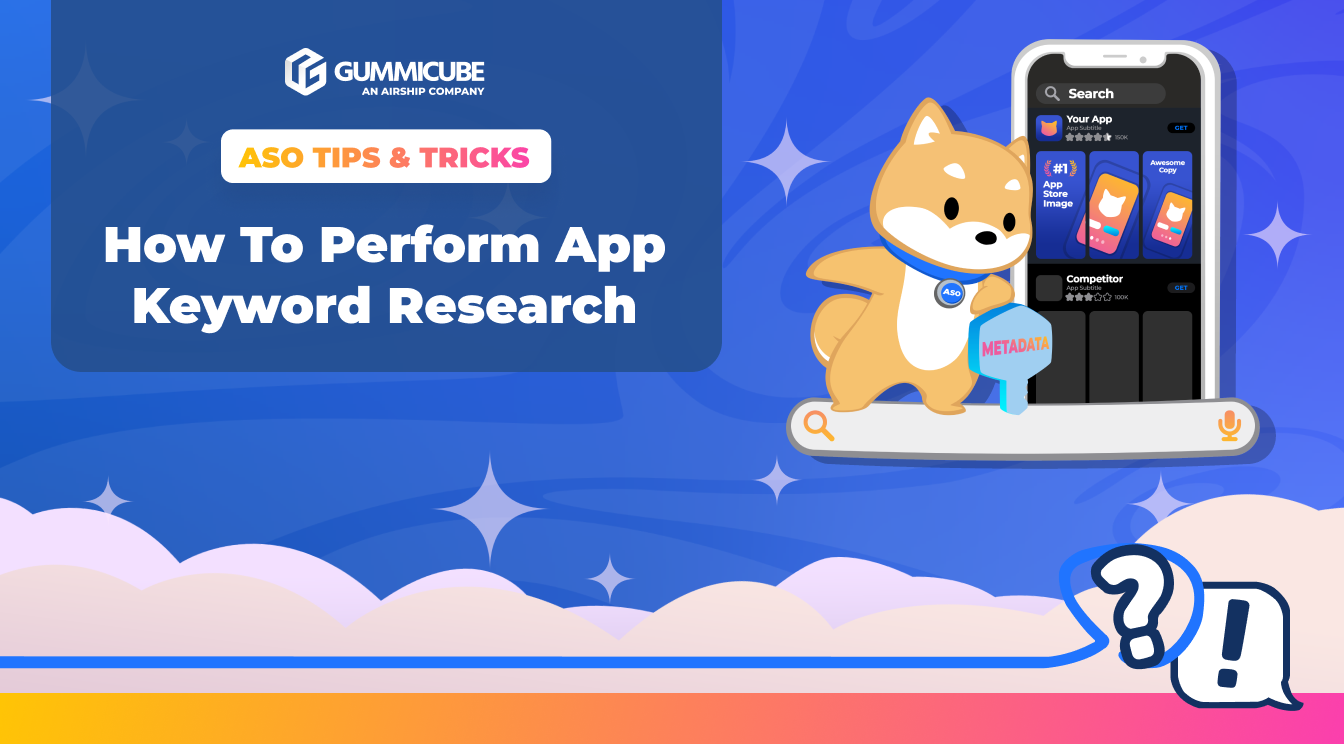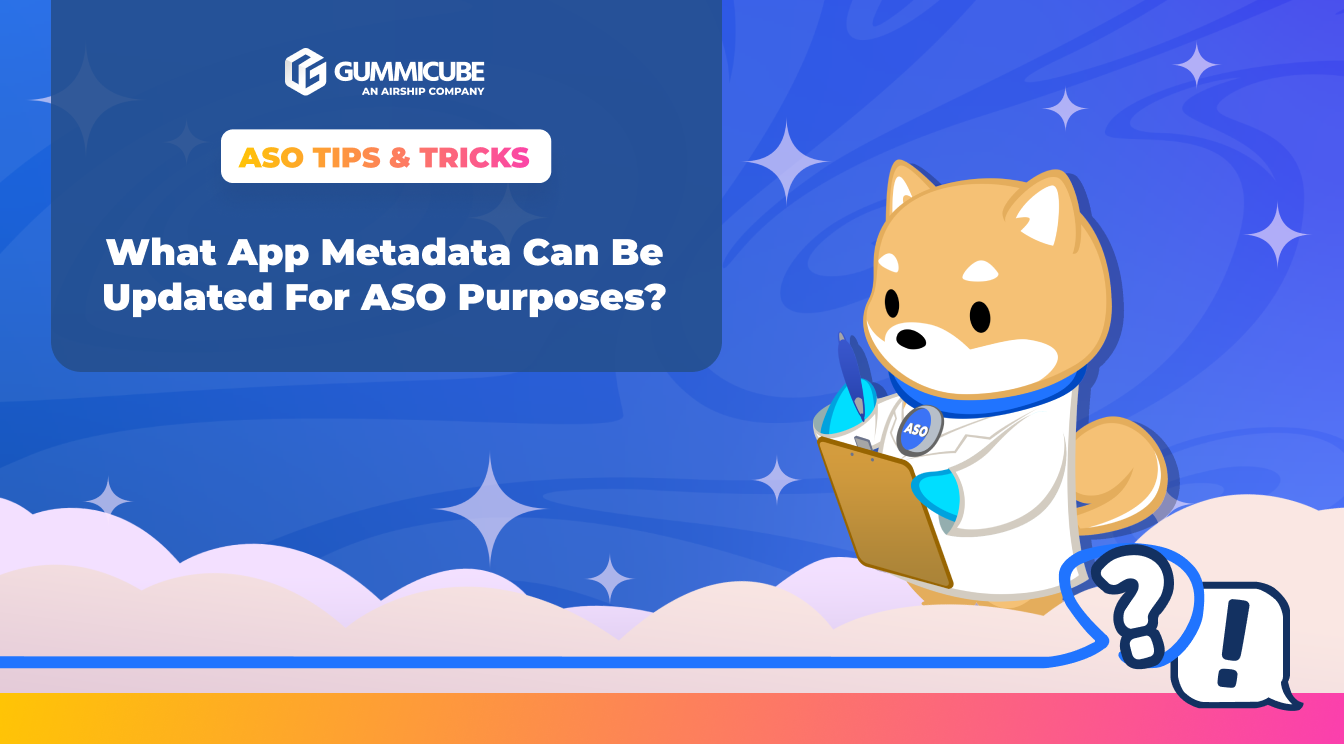Placing Keywords in Your App's iOS Subtitle: Why It Matters
November 12th, 2024


by David Bell
CEO at Gummicube, Inc.
When it comes to app store optimization (ASO), every little detail counts—especially the metadata fields that affect how your app is discovered and perceived. One such field, the iOS subtitle, offers a unique opportunity to optimize for search visibility. This small, yet powerful piece of text, which appears just below the app title in search results, can significantly impact your app’s ability to stand out and attract users.
While many developers focus on optimizing their app title or description, neglecting the subtitle is a missed opportunity. The subtitle is a crucial element that can improve search rankings, provide clearer communication to users, and ultimately drive more downloads. In this blog, we’ll explore why placing keywords in your iOS subtitle matters for ASO and best practices for keyword optimization.
WHY iOS SUBTITLE KEYWORDS MATTER FOR ASO
The iOS subtitle is one of the most valuable yet often overlooked parts of your app’s App Store listing. By strategically placing keywords in your subtitle, you can improve your app’s discoverability and provide potential users with clear, immediate information about what your app offers. So, why should you prioritize optimizing your subtitle with keywords? Let’s break down the key benefits:
So, why should you prioritize optimizing your subtitle with keywords? Let’s break down the key benefits:
Improved Search Rankings: The subtitle field is a key element in Apple’s search algorithms. Relevant keywords in your subtitle can boost your app’s search rankings for specific queries, leading to higher visibility in search results. If a potential user searches for a keyword that’s present in your subtitle, your app is more likely to show up in the results, increasing its chances of being noticed.
Enhanced User Engagement: A well-crafted, keyword-rich subtitle immediately communicates your app’s value proposition to users. This can encourage users to click on your app, increasing engagement and conversions. For example, a subtitle like "Fitness Tracker & Health Monitor" immediately tells users what the app is about, enticing them to learn more. An unclear or irrelevant subtitle could leave users confused about the app’s function and may deter them from clicking.
Algorithmic Advantage: Apple’s algorithms prioritize apps that appear relevant to a user’s search query. Keywords in your subtitle help signal this relevance, giving your app a competitive edge in the search rankings. Apple's search algorithm looks at various metadata fields, and when a keyword is repeated in multiple places (like the title, subtitle, and description), it strengthens the relevance signal for the app.
The Importance of Testing: While you can't directly A/B test metadata on the iOS App Store, you can still test variations by strategically releasing different subtitles to see which converts users best. For example, A/B Testing variations such as "Shop now, pay later" vs. "Buy now, pay later" could provide useful insights into which phrasing resonates best with users.
In conclusion, the iOS subtitle is a pivotal factor in driving your app’s visibility and attracting the right audience. By placing well-researched, relevant keywords in your subtitle, you’re positioning your app for success in search results while also engaging potential users with a compelling, clear message.
The next step is learning how to optimize your subtitle effectively. Best practices for keyword optimization will ensure that your subtitle not only drives traffic but does so in a way that aligns with your users’ needs and search habits. Understanding the process and implementing it correctly is the key to staying ahead of your competition in a crowded app marketplace.
BEST PRACTICES FOR KEYWORD OPTIMIZATION IN YOUR SUBTITLE
To fully capitalize on the power of your iOS subtitle, you’ll need to follow best practices for keyword optimization. Here’s how to get it right:
Research & Selection: Use
ASO tools to find high-traffic keywords that align with your app’s core features and your target audience’s search behavior. Keyword research should go beyond generic terms like "fitness" or "health" and dive into more specific, high-conversion keywords that potential users are likely to search for. For instance, instead of just using "fitness," you might target terms like "calorie tracker" or "weight loss app" that have higher intent.
Avoiding Keyword Stuffing: Ensure your subtitle remains user-friendly by maintaining a natural flow of text, even while including targeted keywords. Overloading your subtitle with keywords can negatively affect readability and user experience. A subtitle that reads unnaturally or feels crammed with keywords can alienate potential users. Aim for a balance that effectively incorporates keywords while keeping the text smooth and readable.
Localization Considerations: If your app is available in multiple regions, consider translating your subtitle to fit local languages and cultural norms. Using localized keywords can significantly improve your app’s visibility in non-English markets. For example, if your app is targeting Spanish-speaking users, your subtitle should reflect local language usage and search habits. This is crucial for apps with a global reach, as it ensures that your app is found by the right users in every market.
Stay Relevant to Your Audience: Your subtitle should resonate with the needs and expectations of your target audience. Use language that speaks to their pain points and interests. For example, if your app is designed to help users save time, using terms like "time-saving" or "efficiency" in your subtitle can attract those who are looking for quick solutions to their problems.
By following these best practices, you’re ensuring that your subtitle is optimized for search performance without compromising user experience. However, keyword optimization is not a one-time effort. As user behavior and search trends evolve, so should your subtitle strategy. Testing and refining your keyword choices regularly will keep your app in the spotlight and ahead of the competition.
Now, let’s shift focus and talk about the bigger picture: implementing your ASO strategy across all metadata fields to enhance your app’s visibility and increase conversion rates. A well-rounded approach to ASO, where every element of your app's metadata is optimized for both search algorithms and user experience, is essential for long-term success.
ADDITIONAL ASO TIPS FOR OPTIMIZING YOUR APP’S METADATA
While optimizing your iOS subtitle is essential, it’s just one piece of the puzzle. For a truly effective ASO strategy, you need to optimize all aspects of your app’s metadata. Let’s take a look at other key elements that impact visibility and conversion rates:
App Title: The app title is the first thing users see in search results. Including a key term or your brand name here can help with both visibility and brand recognition. For instance, an app like "PayPal - Pay, Send, Save" immediately clarifies what the app is while also reinforcing the brand name.
Keywords Field: This is another important area for adding keywords that don’t fit into your title or subtitle. Choose high-ranking, relevant keywords to boost your app’s discoverability in search. For example, if your app is in finance, your keyword field should include terms like "savings," "pay later," "digital wallet," and "instant transfer" as these will help your app show up for users looking for a range of related terms.
App Description: While the description doesn’t directly affect search rankings organically, it plays a crucial role in converting users. Make sure your description clearly highlights your app’s value and core functionality. Use it to elaborate on your app’s features and benefits, as this section helps users decide whether or not they want to download your app. A strong description is concise, focused, and includes keywords in a natural, engaging way.
Screenshots and Preview Videos: Visuals can be just as important as metadata. High-quality screenshots and videos that showcase your app’s features will help drive engagement and downloads. Make sure that the visuals you include highlight the key features that will attract users and solve their pain points. You could even include a compelling app feature video to give users a quick overview of your app, which could further improve conversion rates.
When you align all these elements, you create a cohesive ASO strategy that maximizes your app’s visibility across different parts of the App Store. A holistic approach to keyword optimization and metadata will ensure you’re covering all your bases to achieve the highest possible rankings and conversions.
LET'S CHAT!
If you’re looking to improve your app’s visibility and drive higher download rates, Gummicube is here to help. Our team of ASO experts can guide you through optimizing your app’s metadata for maximum impact. Whether you’re refining your subtitle or expanding your overall ASO strategy, we can provide tailored recommendations to fit your needs. Contact us today to discuss how we can help your app rise above the competition.
Incorporating keyword optimization into your iOS subtitle is essential for gaining visibility and attracting the right users. By following best practices, conducting continuous testing, and optimizing other parts of your metadata, you can create a comprehensive ASO strategy that drives long-term success. Don’t overlook the importance of a strategic, data-driven approach to keyword placement—it's the key to standing out in a competitive app marketplace.
Similar Articles

Posted on December 19th, 2025
By evaluating the feedback from a rejected In-App Event, app developers can resubmit and gain approval. If you are looking to refine your IAE, reach out today.

Posted on December 10th, 2025
App keyword research is a crucial part of developing a winning ASO strategy. Read more to discover ASO tools & strategies to elevate your app listing.

Posted on December 5th, 2025
Optimizing metadata is one of the most high-impact actions developers can take to strengthen their App Store presence. Read more to discover winning strategies.




